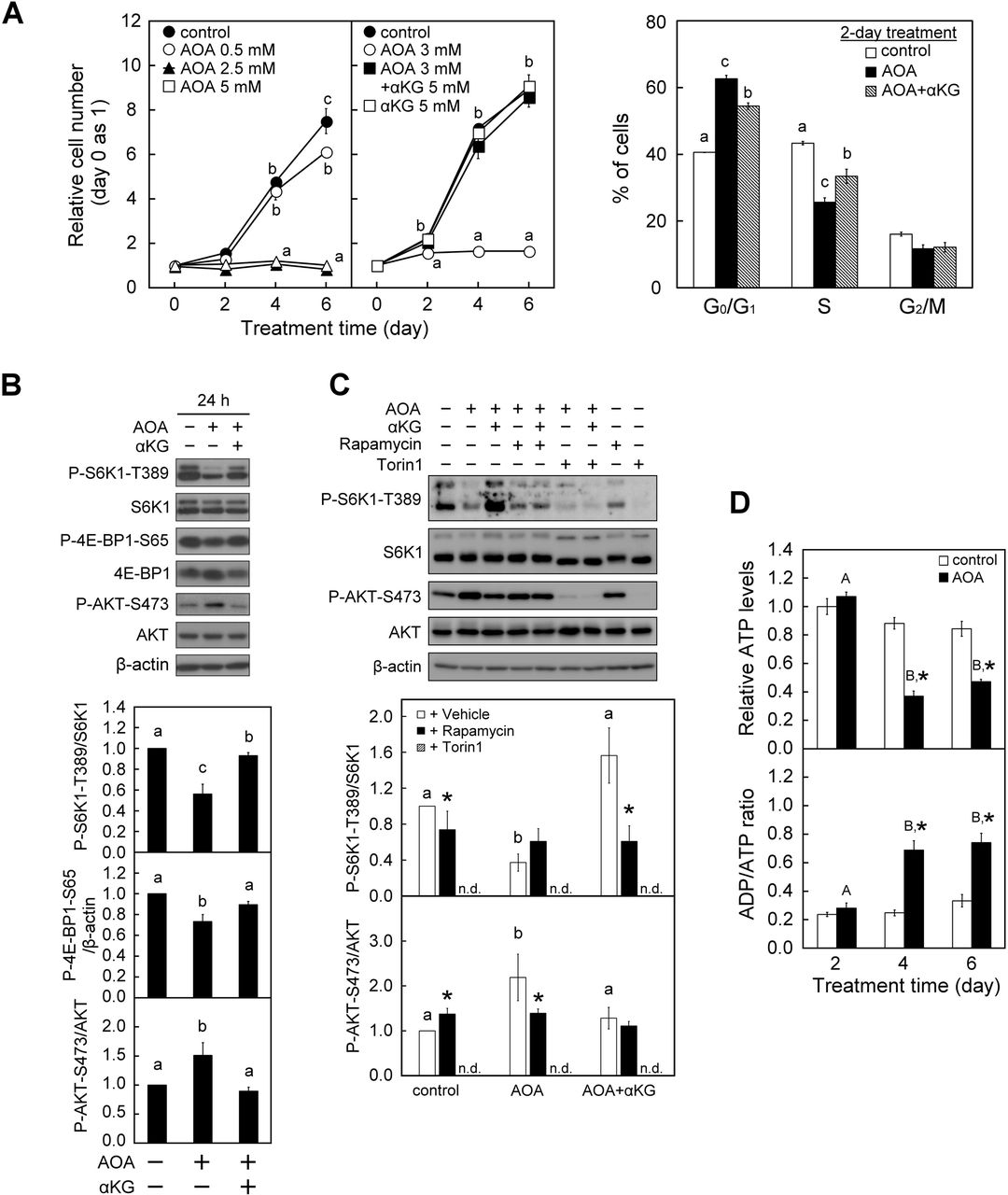The purpose of study was to explore the role of glutamine-dependent anaplerosis in cell fate determination (proliferation and senescence) and the potential associated mechanism by employing a pharmacological inhibitor of glutamine-dependent anaplerosis, amino-oxyacetate (AOA). Using the WI38 normal human embryonic fibroblast cell line, we found that exposure to AOA induced mTORC1 inactivation-mTORC2 activation (within day 1), cell cycle arrest (day 2-6) and cellular senescence (day 4-6). These AOA effects were blocked by concomitantly providing anaplerotic factors [α-ketoglutarate (αKG), pyruvate or oxaloacetate], and not affected by ROS scavenger N-acetyl-cysteine (NAC). Moreover, AOA-induced cellular senescence in WI38 cells is associated with elevated protein levels of p53, p21CIP1 and p16INK4A and decreased Rb protein level, which was blocked by αKG supplementation. In p16INK4A-deficient U2OS human osteosarcoma cells and p16INK4A-knockdown WI38 cells, AOA exposure also induced similar effects on cell proliferation, and protein level of P-Rb-S807/811 and Rb. Interestingly, no AOA induction of cellular senescence was observed in U2OS cells, yet was still seen in p16INK4A-knockdown WI38 cells accompanied by the presence of p16 antibody-reactive p12. In summary, we disclose that glutamine-dependent anaplerosis is essential to cell growth and closely associated with mTORC1 activation and mTORC2 inactivation, and impedes cellular senescence particularly associated with p16INK4A.

 Institute of Biological Chemistry, Academia Sinica
Institute of Biological Chemistry, Academia Sinica
